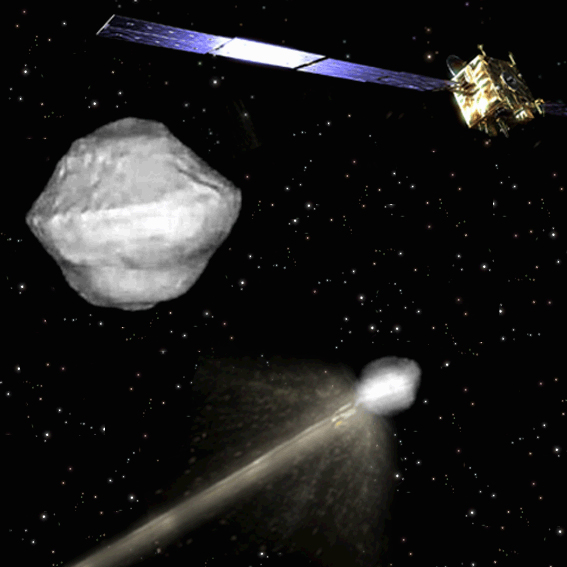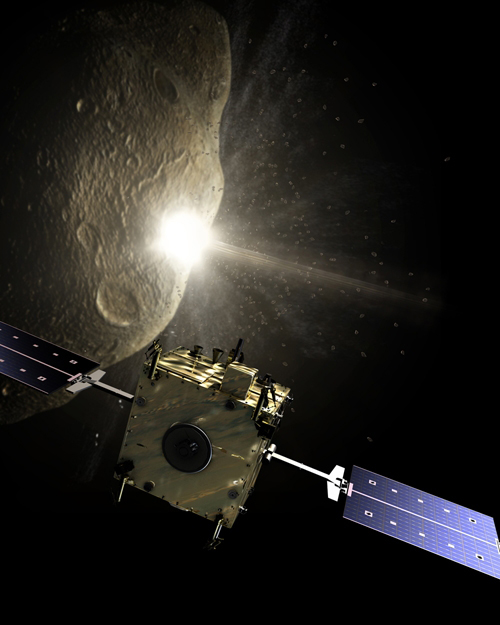Asteroid deflection mission seeks smashing ideas
January 16, 2013

AIDA mission concept (credit: ESA)
A space rock several hundred meters across is heading towards our planet and the last-ditch attempt to avert a disaster — an untested mission to deflect it — fails.
This fictional scene of films and novels could well be a reality one day. So the European Space Agency (ESA) is appealing for research ideas to help guide the development of a U.S.-European asteroid deflection mission now under study.
They are seeking concepts for both ground- and space-based investigations, seeking improved understanding of the physics of very high-speed collisions involving both man-made and natural objects in space.

Measuring the impact on the asteroid (credit: ESA)
ESA’s call will help to guide future studies linked to the Asteroid Impact and Deflection mission (AIDA). This innovative but low-budget transatlantic partnership involves the joint operations of two small spacecraft sent to intercept a binary (dual) asteroid.
The first Double Asteroid Redirection Test (DART) spacecraft, designed by the Johns Hopkins Applied Physics Laboratory, will collide with the smaller of the two asteroids.
Meanwhile, ESA’s Asteroid Impact Monitor (AIM) craft will survey these bodies in detail, before and after the collision.
The impact should change the pace at which the objects spin around each other, observable from Earth. But AIM’s close-up view will ‘ground-truth’ such observations.
“The advantage is that the spacecraft are simple and independent,” says Andy Cheng of Johns Hopkins, leading the AIDA project on the US side. “They can both complete their primary investigation without the other one.”
But by working in tandem, the quality and quantity of results will increase greatly, explains Andrés Gálvez, ESA AIDA study manager: “Both missions become better when put together — getting much more out of the overall investment.
“And the vast amounts of data coming from the joint mission should help to validate various theories, such as our impact modeling.”